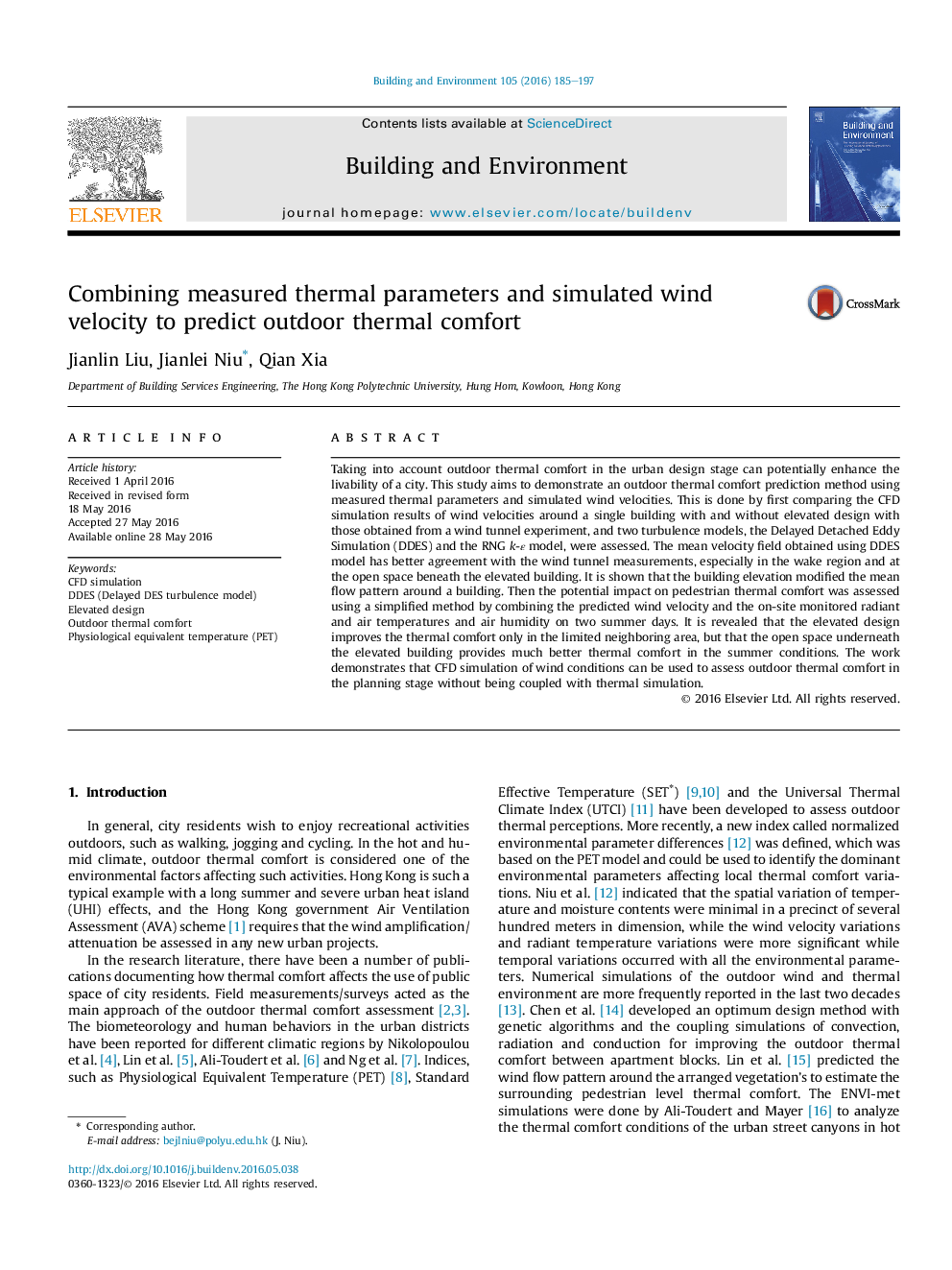| Article ID | Journal | Published Year | Pages | File Type |
|---|---|---|---|---|
| 6698990 | Building and Environment | 2016 | 13 Pages |
Abstract
Taking into account outdoor thermal comfort in the urban design stage can potentially enhance the livability of a city. This study aims to demonstrate an outdoor thermal comfort prediction method using measured thermal parameters and simulated wind velocities. This is done by first comparing the CFD simulation results of wind velocities around a single building with and without elevated design with those obtained from a wind tunnel experiment, and two turbulence models, the Delayed Detached Eddy Simulation (DDES) and the RNG k-ε model, were assessed. The mean velocity field obtained using DDES model has better agreement with the wind tunnel measurements, especially in the wake region and at the open space beneath the elevated building. It is shown that the building elevation modified the mean flow pattern around a building. Then the potential impact on pedestrian thermal comfort was assessed using a simplified method by combining the predicted wind velocity and the on-site monitored radiant and air temperatures and air humidity on two summer days. It is revealed that the elevated design improves the thermal comfort only in the limited neighboring area, but that the open space underneath the elevated building provides much better thermal comfort in the summer conditions. The work demonstrates that CFD simulation of wind conditions can be used to assess outdoor thermal comfort in the planning stage without being coupled with thermal simulation.
Related Topics
Physical Sciences and Engineering
Energy
Renewable Energy, Sustainability and the Environment
Authors
Jianlin Liu, Jianlei Niu, Qian Xia,
